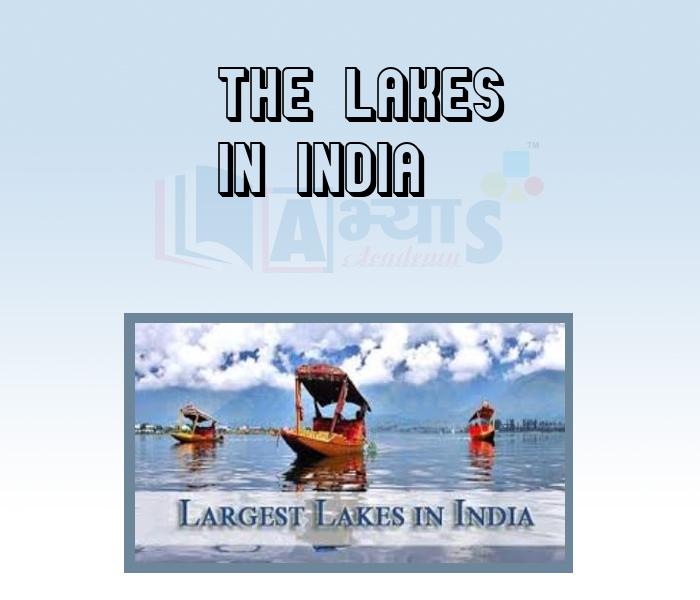The Lakes in India










The Lakes in India
Lakes:
Lakes are useful to human beings in many ways. Dal Lake in Kashmir valley is an attractive tourist destination famous for its house boats and shikaras. Other than tourism, lakes are also used for sporting activities like boating, swimming, water sports, etc.
Lakes in India:
India has many lakes. These differ from each other in their size and other characteristics. There are permanent as well as seasonal lakes. Seasonal lakes contain water only during the monsoon season, e.g. the lakes found in the inland drainage basins of semi-arid regions, i.e. the SÄmbhar salt lake in Rajasthan. (Its water is used to produce salt).
Lakes in India are formed by different processes. e.g. some are formed by the action of glaciers and ice sheets, while the others have been found by wind, river actions or human activities. A meandering river across a flood plain forms cut-offs that later develop into Ox-bow lakes. Spits and bars form lagoons in coastal areas, e.g. the Chilika, Pulicat and Kolleru lakes.
Fresh Water Lakes
Fresh water lakes are formed when glaciers dig out a basin, which is later filled with snowmelt. Most of the fresh water lakes are in the Himalayan region, being formed by the action of glaciers.
The Wular lake in Jammu and Kashmir is the result of tectonic activity. Wular lake is the largest fresh water lake in India.
The Dal lake, Nainital, Bhimtal, Loktak and Barapani are some other important fresh water lakes.
A salt water lake has a higher concentration of salts and other dissolved minerals. Which of the following is the largest salt water lake in India? | |||
| Right Option : D | |||
| View Explanation |
Famous Dal Lake is in ________________ | |||
| Right Option : D | |||
| View Explanation | |||
Which is the deepest lake of the World? | |||
| Right Option : C | |||
| View Explanation | |||
Students / Parents Reviews [10]
It has a great methodology. Students here can get analysis to their test quickly.We can learn easily through PPTs and the testing methods are good. We know that where we have to practice

Barkha Arora
10thAbhyas Methodology is very good. It is based on according to student and each child manages accordingly to its properly. Methodology has improved the abilities of students to shine them in future.

Manish Kumar
10thBeing a parent, I saw my daughter improvement in her studies by seeing a good result in all day to day compititive exam TMO, NSO, IEO etc and as well as studies. I have got a fruitful result from my daughter.

Prisha Gupta
8thIt was a good experience with Abhyas Academy. I even faced problems in starting but slowly and steadily overcomed. Especially reasoning classes helped me a lot.

Cheshta
10thMy experience was very good with Abhyas academy. I am studying here from 6th class and I am satisfied by its results in my life. I improved a lot here ahead of school syllabus.

Ayan Ghosh
8thI have spent a wonderful time in Abhyas academy. It has made my reasoning more apt, English more stronger and Maths an interesting subject for me. It has given me a habbit of self studying

Yatharthi Sharma
10thOne of the best institutes to develope a child interest in studies.Provides SST and English knowledge also unlike other institutes. Teachers are co operative and friendly online tests andPPT develope practical knowledge also.

Aman Kumar Shrivastava
10thAbout Abhyas metholodology the teachers are very nice and hardworking toward students.The Centre Head Mrs Anu Sethi is also a brilliant teacher.Abhyas has taught me how to overcome problems and has always taken my doubts and suppoeted me.

Shreya Shrivastava
8thIt was good as the experience because as we had come here we had been improved in a such envirnment created here.Extra is taught which is beneficial for future.

Eshan Arora
8thMy experience with Abhyas is very good. I have learnt many things here like vedic maths and reasoning also. Teachers here first take our doubts and then there are assignments to verify our weak points.
